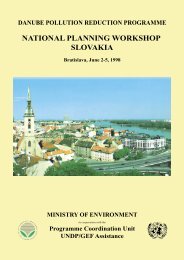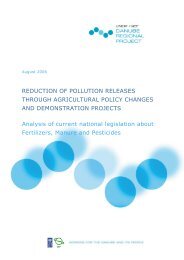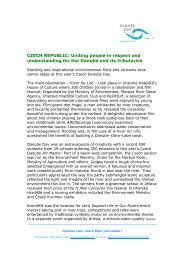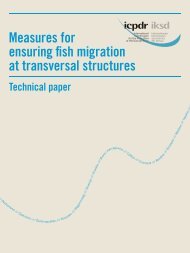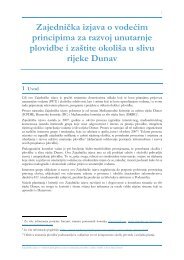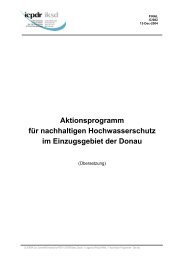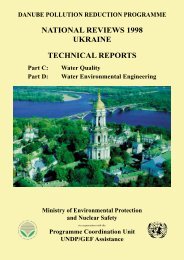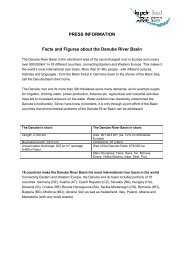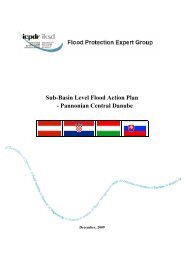You also want an ePaper? Increase the reach of your titles
YUMPU automatically turns print PDFs into web optimized ePapers that Google loves.
Environmental diversity<br />
Due to its large area and very diverse habitats – gravel islands on the Upper River,<br />
significant areas of forest floodplain, extended wetlands on the Lower River –<br />
the Danube River provides the right living conditions in areas of high landscape- and<br />
biodiversity for a large number of different species. Along its course there are some<br />
230 of the Danube River Basin’s 2,860 Natura 2000 sites, an ecological network of<br />
internationally important protected areas in the territory of the European Union.<br />
Over 2,000 plant species and 5,000 animal species live in or by the waters of the Danube,<br />
a habitat which hosts about 2,000 vascular plants, over 40 mammals, approximately<br />
100 fish species as well as important bird sanctuaries for species such as the Dalmatian<br />
pelican. In addition, among the eight member states participating in the policy to protect<br />
these sanctuaries, Slovenia and Bulgaria have the highest terrestrial rate of Natura 2000<br />
sites coverage in the whole EU. At 6,750 km², the delta of the Danube River is one of<br />
the world’s largest wetlands (and Europe’s largest remaining natural wetland) featuring<br />
rare fauna and flora, as well as 30 different types of ecosystem. Located in the territories<br />
of Romania and Ukraine, it became a UNESCO World Heritage Site in 1991.<br />
10



